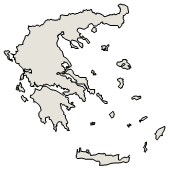

Administrative Region : Peloponnese
Regional unit : Korinthia
Xylokastro (Ξυλόκαστρον) Korinthia
| Municipal unit Xylokastro |
|---|
| Municipal Community Xylokastro |
| Mertikaiika (Μερτικαίικα) |
| Xylokastro (Ξυλόκαστρον, το) |
| Community Ano Trikala |
| Ano Trikala (Άνω Τρίκαλα) |
| Zireia (Ζήρεια, η) |
| Community Geliniatika |
| Geliniatika (Γελινιάτικα) |
| Spartinaiika (Σπαρτιναίικα) |
| Community Dendro |
| Dendro (Δένδρον, το) |
| Community Zemeno |
| Zemeno (Ζεμενόν, το) |
| Community Thalero |
| Thalero (Θαλερόν, το) |
| Community Throfari |
| Throfari (Θροφάρι, το) |
| Community Kamari |
| Kamari (Καμάρι, το) |
| Καριώτικα, τα (Τ.Κ.Καμαρίου) |
| Community Karya |
| Καριώτικα, τα (Τ.Κ.Καρυάς) |
| Karya (Καρυά, η) |
| Community Kato Loutro |
| Ano Loutro (Άνω Λουτρόν, το) |
| Kato Loutro (Κάτω Λουτρόν, το) |
| Community Kato Synoikia Trikalon |
| Kato Synoikia Trikalon (Κάτω Συνοικία Τρικάλων, η) |
| Community Korfiotissa |
| Korfiotissa (Κορφιώτισσα, η) |
| Community Lagkadaiika |
| Αμφιθέα, η |
| Lagkadaiika (Λαγκαδαίικα) |
| Community Manna |
| Manna (Μάννα, η) |
| Community Melissi |
| Melissi (Μελίσσι, το) |
| Οικοδομικός Συνεταιρισμός Υπαλλήλων ΔΕΗ, ο |
| Community Mesi Synoikia Trikalon |
| Mesi Synoikia Trikalon (Μέση Συνοικία Τρικάλων, η) |
| Community Nees Vrysoules |
| Nees Vrysoules (Νέες Βρυσούλες, οι) |
| Community Xanthochori |
| Xanthochori (Ξανθοχώρι, το) |
| Community Panariti |
| Panariti (Παναρίτι, το) |
| Community Pellini |
| Pellini (Πελλήνη, η) |
| Community Pitsa |
| Ano Pitsa (Άνω Πιτσά) |
| Kato Pitsa (Κάτω Πιτσά) |
| Community Rethi |
| Rethi (Ρέθι, το) |
| Community Riza |
| Valtos (Βάλτος, ο) |
| Georganatiika (Γεωργανταίικα) |
| Riza (Ρίζα, η) |
| Sigeritsa (Σιγερίτσα, η) |
| Chartsianika (Χαρτσιάνικα) |
| Community Sofiana |
| Sofiana (Σοφιανά) |
| Community Stylia |
| Stylia (Στύλια) |
| Community Sykea |
| Συκέα, η |
Retrieved from "http://en.wikipedia.org/"
All text is available under the terms of the GNU Free Documentation License
| Ancient Greece
Science, Technology , Medicine , Warfare, , Biographies , Life , Cities/Places/Maps , Arts , Literature , Philosophy ,Olympics, Mythology , History , Images Medieval Greece / Byzantine Empire Science, Technology, Arts, , Warfare , Literature, Biographies, Icons, History Modern Greece Cities, Islands, Regions, Fauna/Flora ,Biographies , History , Warfare, Science/Technology, Literature, Music , Arts , Film/Actors , Sport , Fashion --- |

